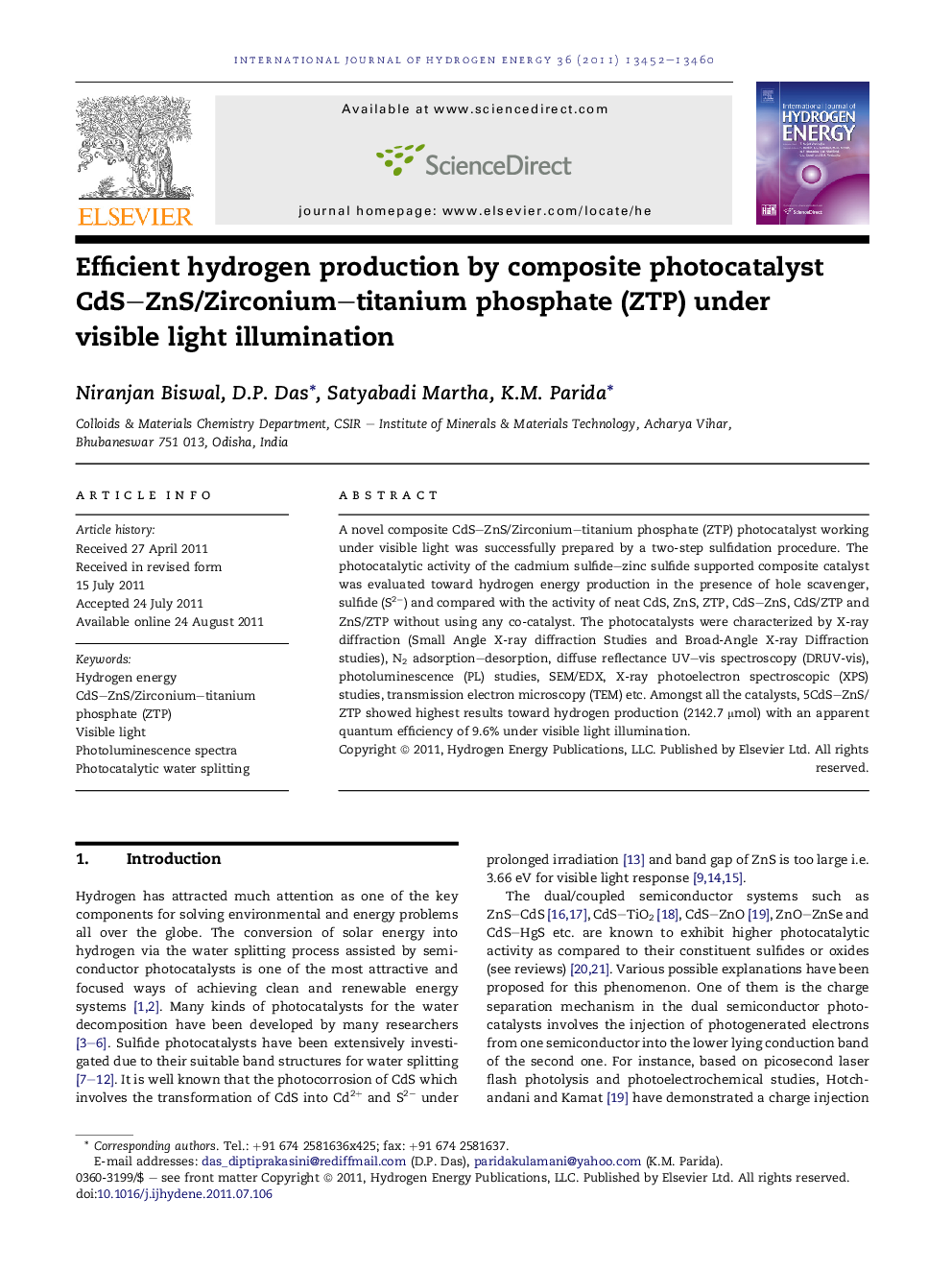| Article ID | Journal | Published Year | Pages | File Type |
|---|---|---|---|---|
| 1278687 | International Journal of Hydrogen Energy | 2011 | 9 Pages |
A novel composite CdS–ZnS/Zirconium–titanium phosphate (ZTP) photocatalyst working under visible light was successfully prepared by a two-step sulfidation procedure. The photocatalytic activity of the cadmium sulfide–zinc sulfide supported composite catalyst was evaluated toward hydrogen energy production in the presence of hole scavenger, sulfide (S2−) and compared with the activity of neat CdS, ZnS, ZTP, CdS–ZnS, CdS/ZTP and ZnS/ZTP without using any co-catalyst. The photocatalysts were characterized by X-ray diffraction (Small Angle X-ray diffraction Studies and Broad-Angle X-ray Diffraction studies), N2 adsorption–desorption, diffuse reflectance UV–vis spectroscopy (DRUV-vis), photoluminescence (PL) studies, SEM/EDX, X-ray photoelectron spectroscopic (XPS) studies, transmission electron microscopy (TEM) etc. Amongst all the catalysts, 5CdS–ZnS/ZTP showed highest results toward hydrogen production (2142.7 μmol) with an apparent quantum efficiency of 9.6% under visible light illumination.
► A novel coupled photocatalyst; CdS–ZnS/zirconium–titanium phosphate composite. ► Synthesized by combination of ion-exchange and sulfurization process. ► Composite formation with CdS–ZnS shifted the absorption edge toward red end. ► 5CdS–ZnS/ZTP composite shows a quantum efficiency of 9.6% toward H2 production.
